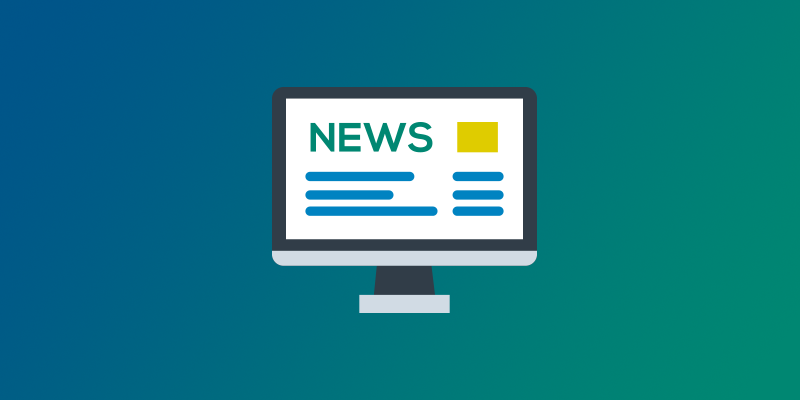
A Recovery Audit Firm is No Longer Enough
February 12, 2020
Update: TAG, Inc. Announces Industry Event Schedule for Spring 2020
March 13, 2020Typically, the players in the Procure-to-Pay (P2P) process are considered to be Supply Chain and Accounts Payable. Most systems fail to acknowledge an equa lly crucial player – the end user.
lly crucial player – the end user.
Though many recognize that the end-user kicks off the P2P process, they do not see that the success of the P2P process often hinges on the end user’s first acts.
Traditionally, the end-users’ role is relegated to requesting products and, perhaps, some aspects of receiving. The end user’s requests are focused on their needs – either individually or as a department. Because they are provided with limited information about the downstream effects of their choices, they are hindered from making educated request decisions that accomplish both their personal and the organization’s objectives. While Supply Chain and the end user could be pulling in the same organizational direction, lack of processes and information-sharing often force them to work in opposition.
What the P2P Process Looks Like When the End User Is Not Informed
At TAG, Inc., we see confused and isolated end-users at many of our clients. Leadership often experiences the same confusion or lack of understanding if they are often unaware of the efficiency and financial impacts of failing to onboard end users to the P2P process. For example, a charge nurses’ primary focus is patient care and staff management. Nonetheless, part of a charge nurses’ responsibilities is inventory management and ordering supplies. Changes in the inventory management process, such as updated product names or new vendors, cause chaos for the charge nurse because no updates are communicated to the end-users. Further, charge nurses, like most other end users, are working against a tight schedule, trying to manage many competing priorities.
The reality is that the orders are placed with little regard to prices, vendors, or contracts because the charge nurse was not taught to order with those concepts in mind. Rather than ordering one brand of latex gloves every time, a single end-user may experiment with six different kinds simply for ordering ease. Without consistent and thorough processes and communication, a charge nurse is unable to effectively order supplies in the most organizationally-focused manner.
What the P2P Process Can Look Like
In contrast, implementing a clear process and educating the end-user makes a vast difference. Changing just a few of the details from the above example creates the following ideal state:
Changes in the inventory management process, such as updated names and new vendors, are communicated to all end users on a regular basis. Because the process is consistent, end-users know exactly where to locate the updates, giving them a resource when they cannot find what they need in the inventory management system. The charge nurse then knows that following the ordering process is essential to providing for the patients on their floor. Charge nurses are apt to follow the process because the steps fit seamlessly within their workflow and, most of the time, create more efficiency. The charge nurse knows how and why to order the same brand of gloves every time, eliminating unnecessary pricing and quality fluctuations. Following the process generates consistency, clarity, and efficiency, improving the P2P process for all key players.
Shifting To a Positive End User Impact
For the P2P process to be truly effective, the end user’s impact must become a positive one. While Supply Chain and Accounts Payable are often left to deal with the aftermath of poor ordering, the three key players can work together harmoniously to ensure their healthcare system receives crucial patient supplies without costing the healthcare system.
Ensuring the end-user is an intentional participant in the P2P process can result in:
- Fewer returns
- Increased on-contract purchases
- Qualifying for higher contract tiers
- Improved PO utilization
- Decreased cost of care
To reap these benefits, organizational leadership should address the following when changing the end-user paradigm.
Align on the end user’s responsibilities
Leadership from end-user departments, as well as Supply Chain and AP, need to discuss the expectations and capacity of end-users. The team should develop expectations that benefit all members involved in the P2P process. However, the defined responsibilities cannot be solely focused on the end-user. Supply Chain and Accounts Payable need to commit to the specifics of the entire P2P process.
Develop procedures that integrate with the end user’s workflow
Creating new procedures or modifying existing ones allows the team to focus on the primary objective of the healthcare system: patient care. Orchestrating the essential functions around this primary objective ensures that those performing the essential functions are directly contributing to the efficiency and cost-savings initiatives within the healthcare system.
Since end-users are often front-line patient care providers, integrating new processes to complement their existing workflow will increase the adherence rate. Additionally, once a new process has been implemented, solicit feedback from end-users to ensure the process is empowering end-users to order effectively, reducing Supply Chain and AP rework, and decreasing costs for the healthcare system.
Teach the end-user
Teaching the end-user not only includes the processes but also includes why these processes are critical. Highlighting the downstream impacts for Supply Chain and AP is, of course, crucial. However, most end-users care primarily about their main function. Front-line patient care providers need to understand how these procedures allow them to deliver superior patient care. Administrative team members need to know how these processes keep the organization functioning smoothly and efficiently.
Further, pair Supply Chain and AP representatives with department-specific champions to teach the end-users. This approach demonstrates a team methodology, as well as generates significantly more buy-in from other team members.
Aligning on responsibilities, developing integrative procedures, and teaching the end-user is necessary to incorporate the end-user as a key player in the P2P process. Partner with TAG to develop these procedures, identify areas of risk, and prepare your end users for success. Connect with us now!



